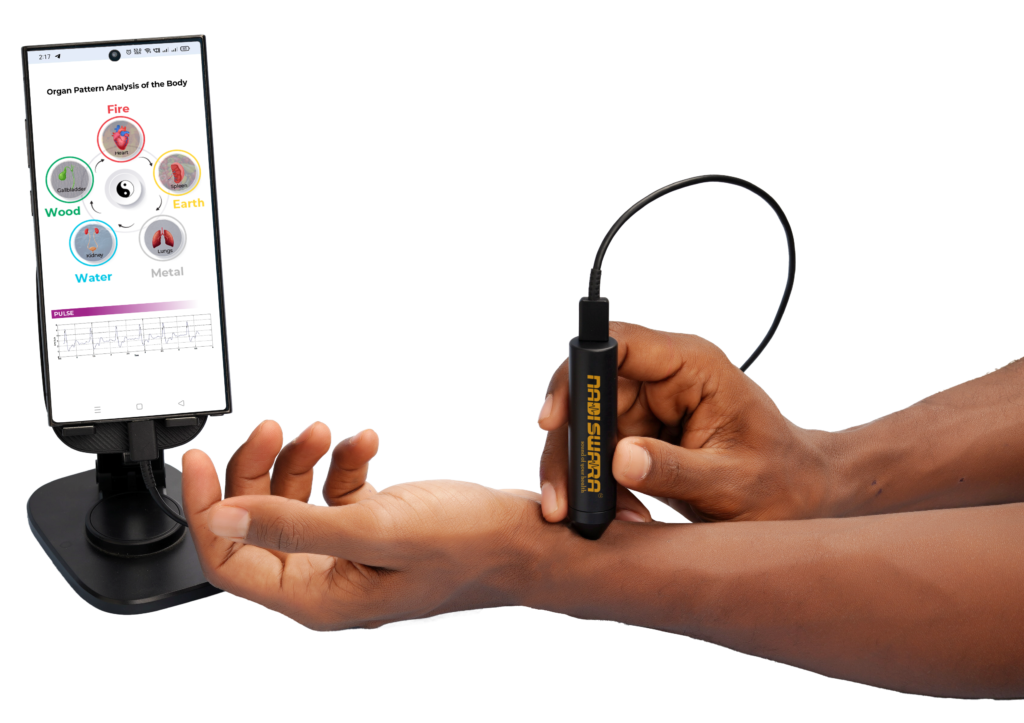Can AI Decode Naadi Pariksha?

For thousands of years, Naadi Pariksha (Pulse Diagnosis) has been a cornerstone of Ayurveda, India’s ancient system of holistic health. With just three fingers placed on the wrist, seasoned practitioners claim to detect imbalances in doshas (Vata, Pitta, Kapha), underlying health issues, and even emotional states.
It almost sounds magical.
But as we stand in the age of wearables, sensors, and AI, a question emerges:
Can we digitize Naadi Pariksha?
Can machines learn what ancient healers could sense with a touch?
Let’s explore the fascinating overlap of tech, tradition, and possibility.
🌀 What Is Naadi Pariksha?
Naadi Pariksha is not just a pulse count. It’s a deep, intuitive diagnostic tool where a Vaidya feels variations in:
- Rhythm
- Strength
- Frequency
- Subtle vibrations (gunas)
Unlike modern medicine’s heart rate or BP, Naadi Pariksha links the pulse to internal organs, mental state, and energy imbalances—categorizing the flow into Vata, Pitta, and Kapha.
But it’s highly subjective, depending on experience, intuition, and years of practice.
📱 Pulse Analysis in Modern Tech
Today's smartwatches like Apple Watch, Fitbit, and Oura Ring already analyze:
- Heart Rate Variability (HRV)
- Oxygen Saturation
- Resting Pulse Trends
- Sleep Patterns
These work through photoplethysmography (PPG) — shining light into the skin and reading blood flow changes.
But here’s the catch:
🧘🏽♂️ These tools show data. Naadi Pariksha feels patterns.
So how do we go beyond just numbers?
🧠 AI + Pulse: Current Research
Recent healthcare startups are using AI to:
- Detect arrhythmias from smartwatch data
- Predict stress levels from HRV
- Monitor mental health via breathing and pulse patterns
Projects like MIT’s DeepHeart and Cardiogram use neural networks to identify conditions like:
- Hypertension
- Diabetes
- Sleep apnea
Now imagine training such a model on annotated Ayurvedic Naadi readings, linking pulse rhythms with doshic imbalances. A future dataset of:
{
"pulse_rate": 82,
"variation_pattern": "irregular-high",
"skin_temp": 37.2,
"stress_score": 7.2,
"dosha_prediction": "Vata-Pitta"
}
We’re not far from creating Naadi AI.
🛠 Mini Techgyanic Project: Build Your Own Pulse Reader
Want to try it yourself?
🎯 Objective:
Build a basic pulse rate monitor using Arduino + Python.
🧰 Requirements:
- Arduino Uno
- Pulse Sensor (PPG)
- Jumper wires
- USB Cable
- Python with
pyserialandmatplotlib
🧾 Python Code Snippet:
import serial
import matplotlib.pyplot as plt
ser = serial.Serial('COM3', 9600)
pulse_values = []
while True:
val = ser.readline().decode().strip()
pulse_values.append(int(val))
if len(pulse_values) > 100:
pulse_values.pop(0)
plt.clf()
plt.plot(pulse_values)
plt.pause(0.05)
🎥 Add a graph that shows pulse spikes in real-time — your first step toward digital Naadi.
🤔 The Challenges
While it’s exciting, digitizing Naadi Pariksha raises questions:
-
Can AI capture intuition?
Not yet. But pattern recognition is improving rapidly. -
Do we have reliable datasets?
Very few validated Ayurvedic pulse datasets exist. -
Ethics & Privacy?
Combining health data with AI demands strong data governance.
🔮 What the Future Looks Like
Imagine:
- A wearable band trained on Naadi signals
- An app that shows your dosha health in real time
- A digital Vaidya guiding you through food, meditation, and lifestyle
This isn’t fantasy — it’s a startup idea waiting to happen.
🌿 Final Thought
At Techgyanic, we believe the future belongs to those who combine tech skills with cultural context. Whether you're building apps, sensors, or AI models — look around you. India’s wisdom has volumes of untapped knowledge ready for disruption.
Naadi Pariksha may be ancient, but it just might be the next frontier in bio-AI.
✨ What do you think?
Drop your thoughts or build your own pulse project and tag us [@Techgyanic].